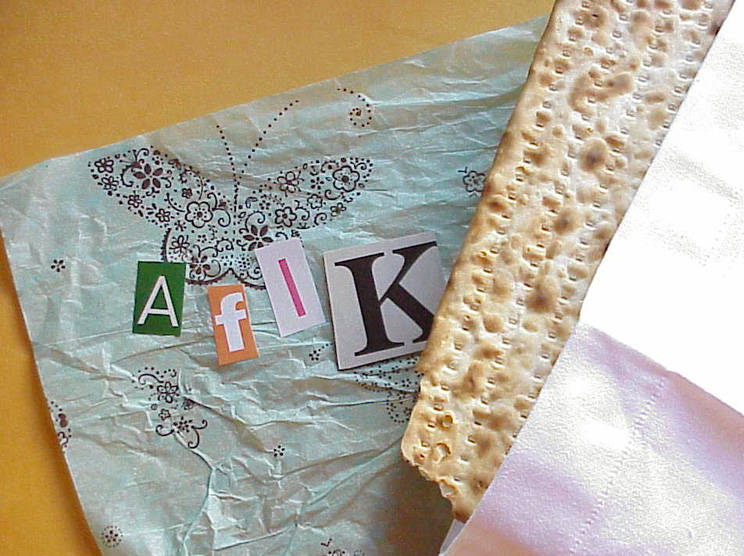
Afikomen (אֲפִיקוֹמָן) is the broken piece of matzah that is hidden during the Passover Seder and then sought out by the youngest members of the seder table. The word Afikomen comes from the Greeek epikomion [ἐπικώμιον], meaning “that which comes after” or “dessert”).
The seder meal is in many ways one of the most structured of Jewish observations. There is the seder plate itself with the many and assorted items symbolizing both oppression and freedom from slavery. Then within the seder meal itself is another tradition that for years has kept younger generations engaged and served as the benchmark for all of how the seder is tracking, what is left to observe and when one can declare the seder officially over.
What is this act within the act? The afikomen! In the earliest parts of the meal the middle of three matzah is broken into two pieces, the larger of which will be the afikomen. (The end of the first act or the prelude!) At this time the leader of the seder or his or her delegate hides the afikomen somewhere in the house to be found later by the children in attendance. The finding of said afikomen yields physical rewards (candy, money) and also ensures to some degree the children remain engaged until the search is on.
Then when the meal is completed the hunt is on and the seder cannot be completed until the afikomen is found. While in the Reformed households of my youth it was the kids who searched for the afikomen, in others the afikomen is held ransom by the children and the parents must pay to release the afikomen. Either way until the afikomen is produced and shared the meal itself cannot end.
With the discovery of the afikomen, all may take a small bite but only after all other food has been served. It is the last food to be eaten and also is a symbol of the end of all revelry. In modern times this has meant no entertainments such as TV or video games.
